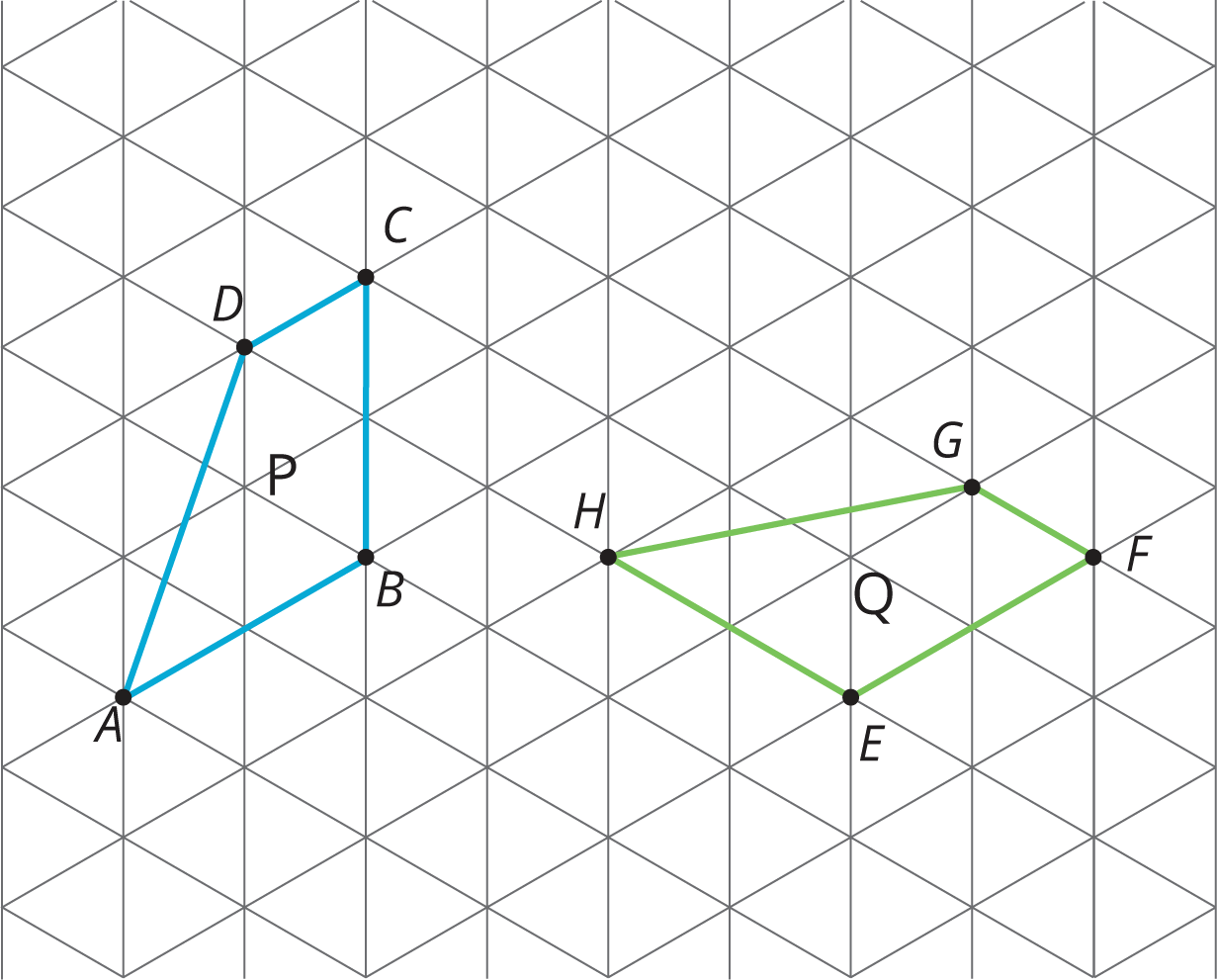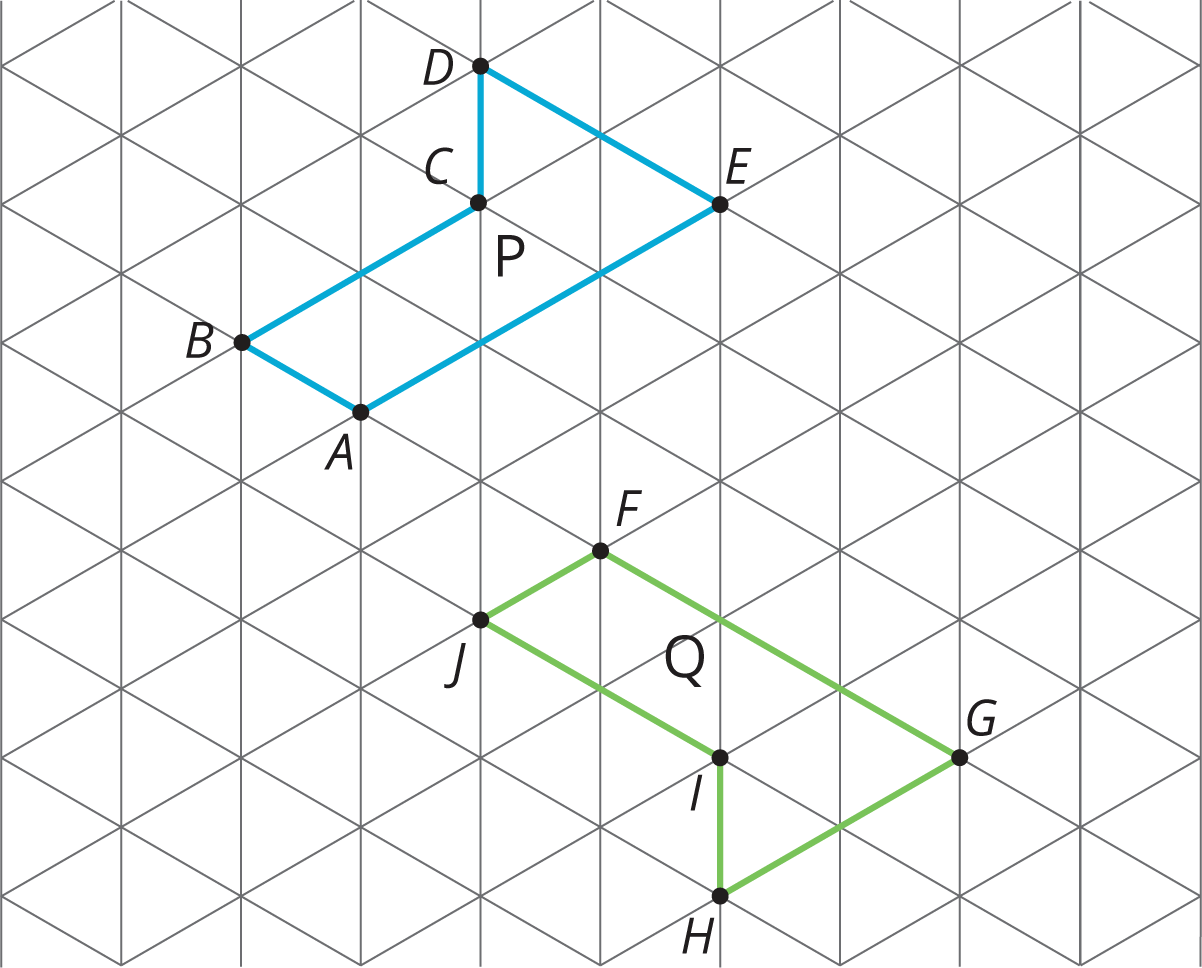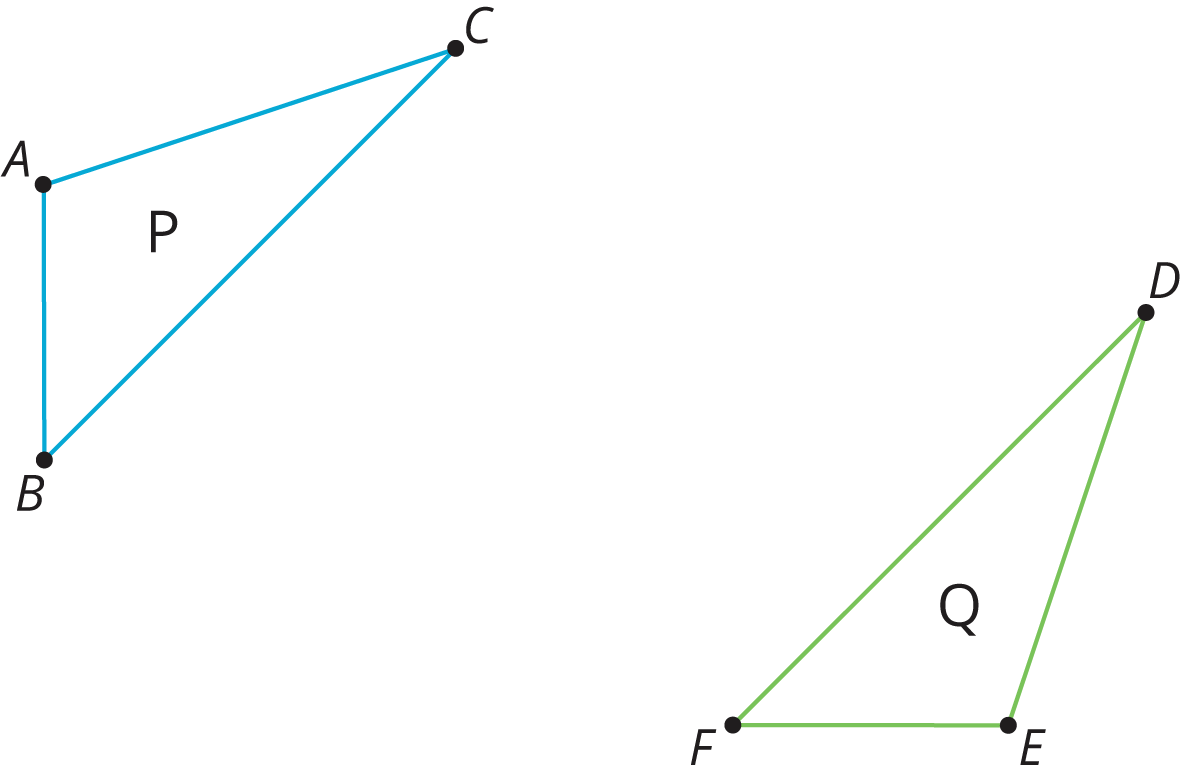Lesson 4
Making the Moves
Problem 1
For each pair of polygons, describe a sequence of translations, rotations, and reflections that takes Polygon P to Polygon Q.
Solution
For access, consult one of our IM Certified Partners.
Problem 2
Here is quadrilateral \(ABCD\) and line \(\ell\).
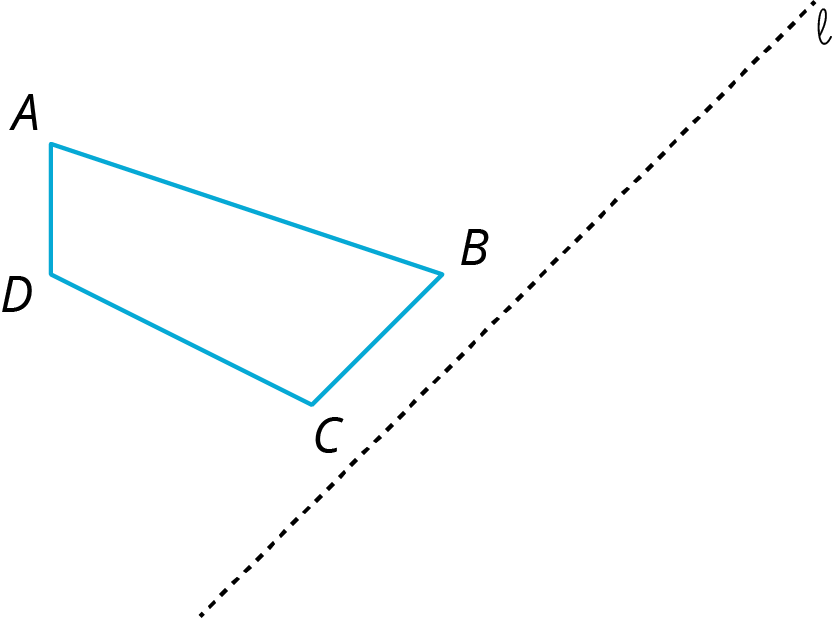
Draw the image of quadrilateral \(ABCD\) after reflecting it across line \(\ell\).
Solution
For access, consult one of our IM Certified Partners.
(From Unit 1, Lesson 2.)Problem 3
Here is quadrilateral \(ABCD\).
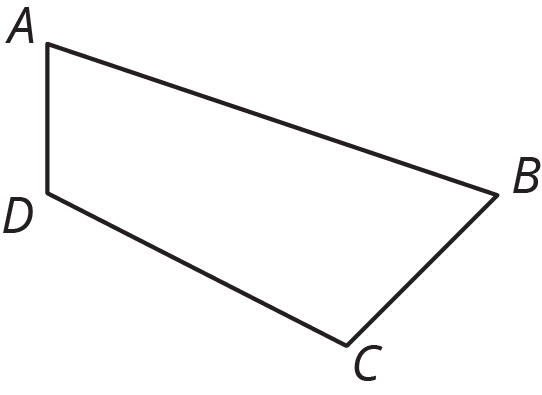
Draw the image of quadrilateral \(ABCD\) after each rotation using \(B\) as center.
- 90 degrees clockwise
- 120 degrees clockwise
- 30 degrees counterclockwise
Solution
For access, consult one of our IM Certified Partners.
(From Unit 1, Lesson 2.)